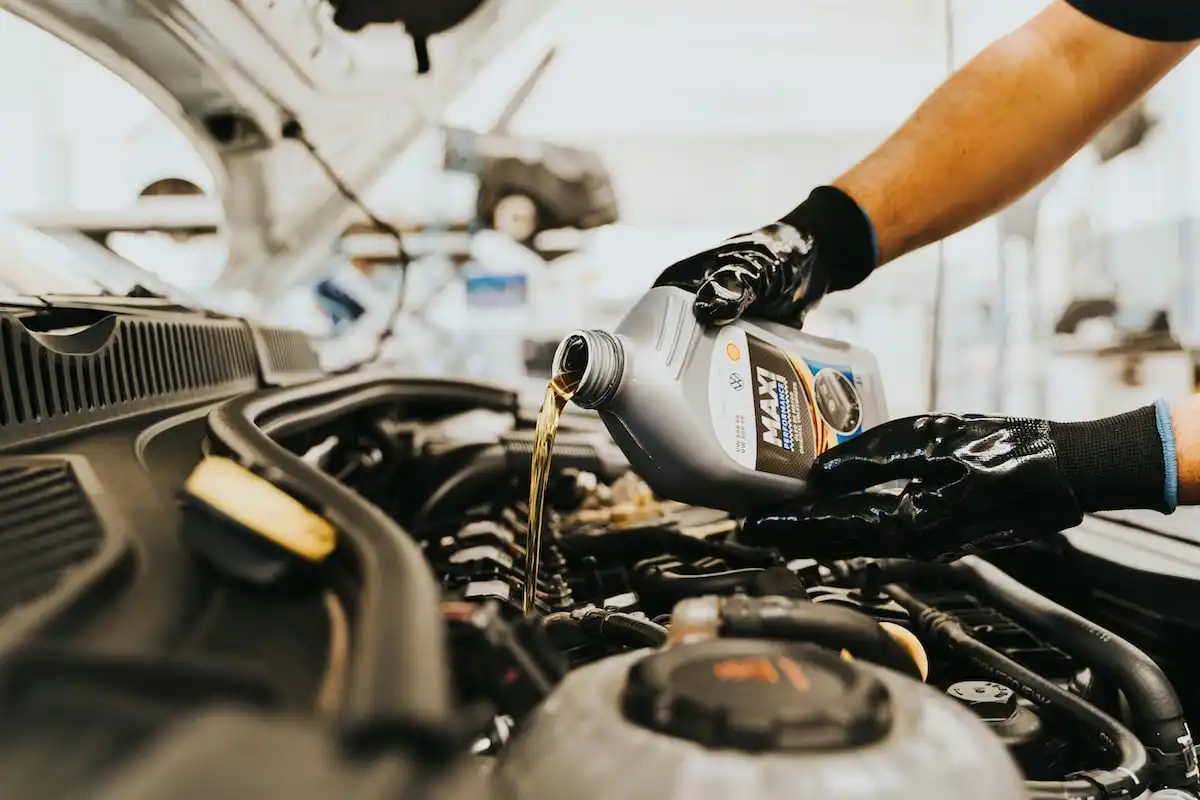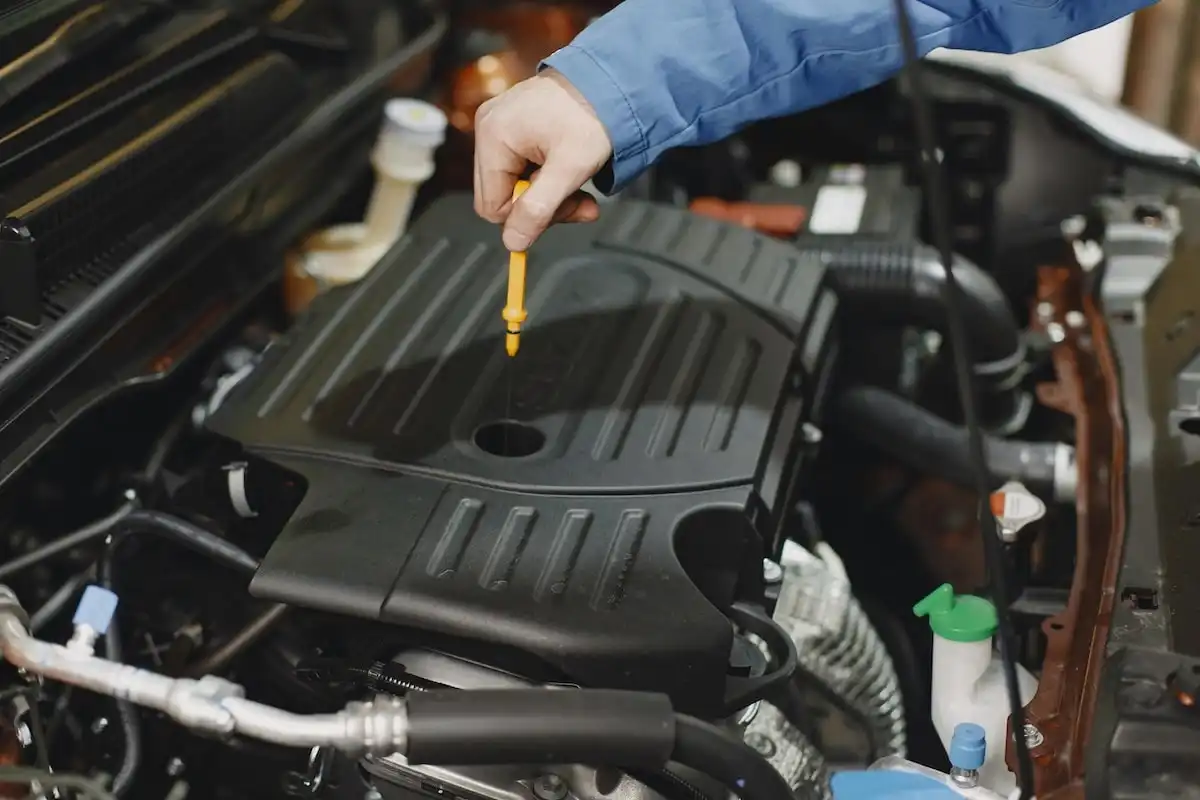While it might sound intimidating, the process of checking your car's oil level is quick, simple and can potentially save you thousands if you discover the engine is running dry.
In this piece, you’ll learn what engine oil does, why it’s so important to keep your car's oil levels at a healthy level and then take a step-by-step look at how to check and change your own oil.
Why is Engine Oil Important?
Without getting too bogged down in technical details, the most important thing engine oil does inside an engine block is to lubricate the metal, allowing it to move smoothly.
Think about it - inside an engine block, you've got metal banging up against metal at extremely high speeds and while under high pressure.
This is why engine oil is so important, because it keeps those metal elements inside an engine covered in a dense oil, allowing them to continue moving at high speeds without any additional friction.
Without clean and sufficient engine oil, your car's performance suffers, and expensive repairs can follow.
Engine oil is the lifeblood of your car's engine because it:
-
Lubricates moving parts to reduce friction and wear.
-
Regulates temperature by carrying heat away from critical engine components.
-
Protects against corrosion by coating metal parts with a protective film.
-
Traps dirt and debris in the oil filter, keeping the engine clean.

What Happens When an Engine is Low on Oil?
Running an engine with low or dirty oil can quickly lead to serious damage. Without enough oil:
-
Friction increases, causing metal parts to grind together.
-
Overheating occurs, as oil can no longer properly dissipate heat.
-
Engine components wear faster, shortening the lifespan of your vehicle.
-
In severe cases, the engine can seize completely, resulting in costly repairs or a full replacement.
This is why checking and changing your oil at regular intervals is essential and allows you to potentially save thousands by avoiding a catastrophic engine issue.
How to Check Your Car's Oil Levels: A Step-by-Step Guide
1. Park on a level surface.
For an accurate reading, the car must be level. If the car is on a slope, the reading can be wrong.
2. Warm the engine (recommended) then switch it off.
Drive or run the engine for 5-10 minutes so oil circulates, then switch it off and wait about 5-10 minutes to let oil drain back into the sump. (If your owner's manual specifies a different method - follow the manual.)
3. Engage the handbrake and open the bonnet/hood.
Make sure the car is secure and the bonnet is safely propped.
4. Locate the oil dipstick.
Look for a dipstick with a brightly coloured handle (often yellow/orange) marked "engine oil" or an oil symbol. Some modern cars don’t have a dipstick - if you can't find one, check your manual for an electronic oil-level readout.
5. Pull out the dipstick and wipe it clean.
Use your rag or paper towel to remove all oil to get an accurate, fresh reading.
6. Reinsert the dipstick fully, then withdraw it again.
Make sure it's pushed all the way in before you pull it out to read the level.
7. Read the oil level.
Look at the end of the dipstick - you’ll see marks such as two holes, lines, "MIN / MAX" or a cross-hatched area. The oil film should sit between those marks. If it's at or below the minimum mark, you need to add oil.
8. Check oil condition while you're at it.
Fresh oil is amber and translucent. Dark oil is normal with mileage, but milky/foamy oil (looks like coffee with milk) suggests coolant contamination - see a mechanic. Gritty oil or metal flakes are also a problem.
9. Top up if needed - a little at a time.
If the level is low, remove the oil filler cap on the engine, add oil in small amounts (start with ~100 mL / 3-4 oz), wait a minute, then recheck with the dipstick. Repeat until the level is in the correct range. Avoid overfilling - overfilled oil can cause excess pressure, foaming and engine issues.
10. Secure everything and check for leaks.
Replace the dipstick and oil filler cap, close the bonnet, start the engine briefly and look under the car for leaks. Re-check the level once the engine has settled again if you added oil.
11. Record the check (optional).
Jot down the date and odometer reading - handy for maintenance tracking.

Request a Quote
Don't forget that our car-buying experts are waiting on hand to help find the best possible deal on your next car - reach out today.
Get in touch with one of our Car Buying Specialists today.
Request a quoteHow often should I change my car's oil?
Most manufacturers recommend changing engine oil every 10,000 to 15,000 kilometres or every 6 to 12 months, whichever comes first. However, this varies depending on your car’s make, model, age, and whether you drive in harsh conditions (stop-start traffic, extreme heat, towing, etc.). Always check your owner's manual for the recommended interval.
What type of oil should I use in my car?
The correct oil depends on your engine and driving conditions. Common options include conventional oil, synthetic oil, or a blend. Check your owner's manual for the required viscosity (e.g., 5W-30, 10W-40) and specifications and only top-up with the same oil already inside the engine block. Using the wrong oil can affect performance and may even void your warranty.
Can I change my car's oil myself?
Yes, absolutely - with the right tools and knowledge, most people can safely change their car’s oil at home. However, if you’re unsure, lack equipment, or your car has a complex setup, it’s best to have a mechanic do it. Also, if you have a car currently under warranty or eligible for capped-price servicing, it's best to let the experts do the hard work.
What happens if I don't change my oil regularly?
Old, dirty oil loses its ability to lubricate and cool the engine properly. This can lead to reduced fuel efficiency, overheating, increased wear, and eventually engine failure. Skipping oil changes is one of the fastest ways to shorten your car's life due to the mechanical stress that takes place inside the engine.
How do I know if my car needs an oil change?
Look out for signs like the oil warning light on your dashboard illuminating, noticing engine oil that looks thick, dark, or gritty on the dipstick, hearing knocking or ticking noises from the engine, a burning oil smell while driving or higher than usual fuel consumption.
Where do I dispose of old engine oil?
Never pour oil down the drain or into the environment. Take it to a local recycling centre, council collection point, or an auto shop that accepts used oil. Many service stations also provide disposal facilities.








